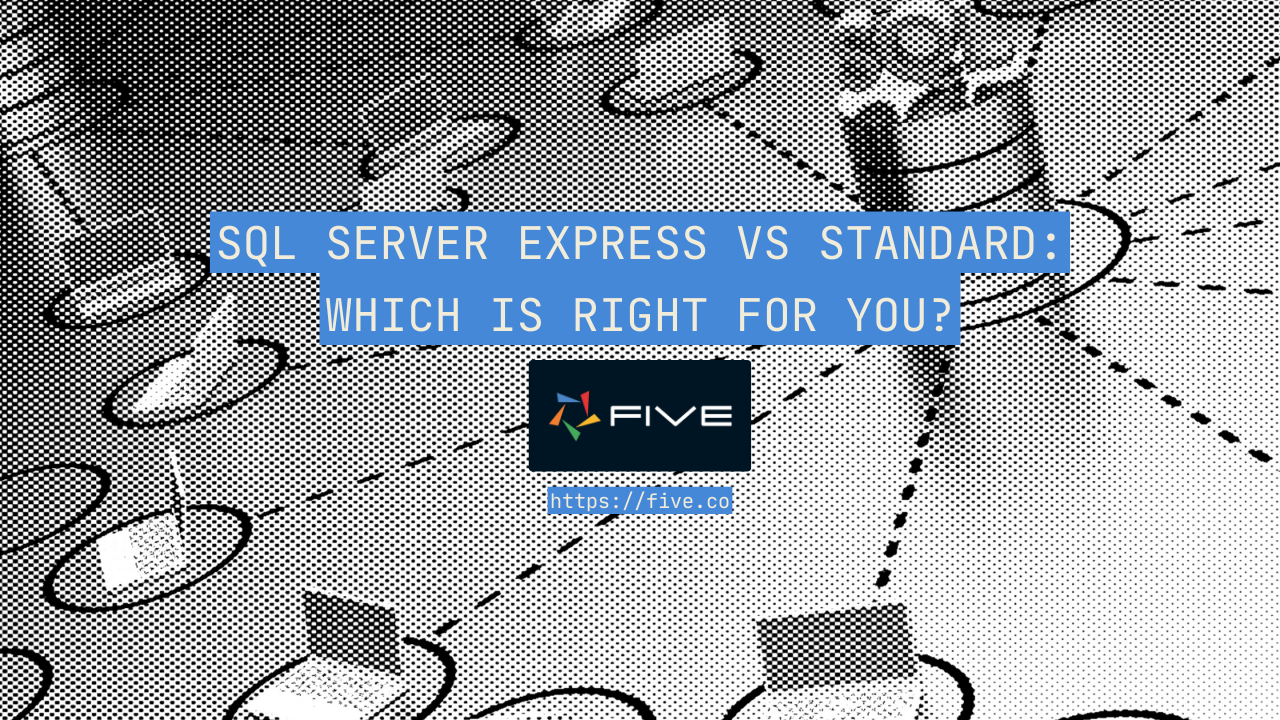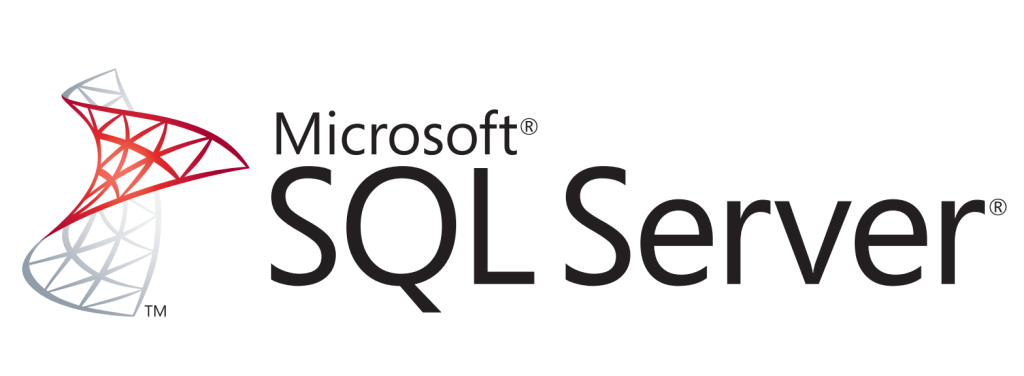SQL Server Express vs Standard: Which Is Right for You?

Feature & Cost Comparison: SQL Server Express vs Standard
SQL Server Express and SQL Server Standard are two popular editions of Microsoft’s relational database management system (RDBMS). Both editions offer a robust set of features and capabilities, but they differ in terms of their limitations, target audience, and cost.
In this article, we explore the differences between SQL Server Express and SQL Server Standard.
Here’s What You Can Do With Five
Create and Model a SQL Database ✅
Write or Build SQL Queries ✅
Visualize Queries as Charts or in Dashboards ✅
Add CRUD Permissions to Control Data Access ✅
Host Your Database Online ✅
“Five bridges the gap between SQL and the web,
allowing me to create full-stack applications almost entirely in SQL”
– Crag Jones, Database Administrator (DBA)
SQL Server Express is a free, entry-level database that is ideal for learning and development, small-scale applications, and proof of concepts. It has a number of limitations, such as a 10 GB database size limit and a 1 GB memory limit. However, it is a fully functional database engine that includes many of the same features as the paid editions of SQL Server.
SQL Server Standard is a paid edition of SQL Server that is designed for small to medium-sized businesses. It offers a full set of features, including support for larger databases, more memory, and multiple CPU cores. SQL Server Standard is a good choice for production workloads, departmental applications, and line-of-business applications.
Importance of Choosing the Right Edition

Choosing the right edition of SQL Server is important because it can have a significant impact on the performance, scalability, and reliability of your database applications. If you choose an edition that is not suited to your needs, you may experience performance bottlenecks, scalability issues, or even data loss.
SQL Server Express vs SQL Server Standard: The Key Differences
The following table summarizes some of the key differences between SQL Server Express and SQL Server Standard:
| Feature | SQL Server Express | SQL Server Standard |
|---|---|---|
| Cost | Free | Paid |
| Database size limit | 10 GB | 16 TB |
| Maximum memory | 1 GB | 128 GB |
| CPU usage | Limited to one logical processor | Unlimited |
| Features | Limited set of features | Full set of features |
| Target audience | Developers, students, and hobbyists | Small to medium-sized businesses |
| Examples of use | Learning and development, small-scale applications, proof of concepts | Production workloads, departmental applications, line-of-business applications |
In the following sections, we will take a closer look at each edition and discuss its strengths and weaknesses.
Feature Comparison: SQL Server Express vs SQL Server Standard
| Feature | SQL Server Express | SQL Server Standard |
|---|---|---|
| Supported features | Limited set of features, including: * Database Engine * SQL Server Management Studio * T-SQL * Replication * CLR Integration * Full-text search | Full set of features, including: * Database Engine * SQL Server Management Studio * T-SQL * Replication * CLR Integration * Full-text search * Analysis Services * Reporting Services * Integration Services * Data Quality Services * Master Data Services * Machine Learning Services * In-Memory OLTP |
Cost Comparison
| Factor | SQL Server Express | SQL Server Standard |
|---|---|---|
| Licensing fees | Free | Paid |
| Maintenance costs | None | Required |
| Total cost of ownership (TCO) | Low | Moderate |
Benefits of SQL Server Express
- Free to use
- Ideal for learning and development
- Good for small-scale applications
Benefits of SQL Server Standard
- Full set of features
- Suitable for production workloads
- Good for small to medium-sized businesses
Key Findings
- SQL Server Express is a free, entry-level database that is ideal for learning and development, small-scale applications, and proof of concepts.
- SQL Server Standard is a paid edition of SQL Server that offers a full set of features and is suitable for production workloads, departmental applications, and line-of-business applications.
- The key differences between the two editions are database size limit, maximum memory, CPU usage, supported features, target audience, and cost.
Recommendation for Choosing the Right Edition
The best edition of SQL Server for you will depend on your specific needs and requirements. If you are a developer or student who is learning SQL Server, or if you are building a small-scale application, then SQL Server Express is a good option. If you are a business that needs a full-featured database for production workloads, then SQL Server Standard is a better choice.
If you are not sure which edition is right for you, you can always start with SQL Server Express and upgrade to a paid edition later if you need more features or performance.
Five and SQL

Five is a low-code development platform that allows users to build and deploy database-driven applications without having to write a lot of code.
Five users can interact with the underlying SQL Server database in a number of ways. For example, users can use Five’s visual query builder to create and execute SQL queries. They can also use Five’s data modeling tools to create and manage database tables, relationships, and constraints.
In addition, Five provides a number of built-in SQL functions that users can use to manipulate data. These functions can be used to perform tasks such as filtering, sorting, and aggregating data.
By using Five, users can take advantage of the power of SQL without having to learn the intricacies of the language. This makes Five a good option for users who are new to SQL or who do not want to spend a lot of time writing code.
Five comes with a free MySQL Database – Learn more here
How Five Uses SQL
Five uses SQL in a number of ways to provide users with a powerful and flexible development environment. Some of the ways that Five uses SQL include:
- Data storage: In Five you can use SQL Server to store data. This provides users with a reliable and scalable data storage solution.
- Data retrieval: Five uses SQL to retrieve data from the database. This allows users to query the database and get the data they need.
- Data manipulation: Five uses SQL to manipulate data. This allows users to insert, update, and delete data in the database.
- Data validation: Five uses SQL to validate data. This helps to ensure that data is accurate and consistent.
- Data security: Five uses SQL to secure data. This helps to protect data from unauthorized access.
By using SQL, Five provides users with a powerful and flexible development environment. This allows users to build complex database-driven applications without having to write a lot of code.
Conclusion: SQL Server Express vs Standard
SQL Server Express and SQL Server Standard are both powerful and versatile database management systems. The best edition for you will depend on your specific needs and requirements. If you are unsure which edition to choose, you can always start with SQL Server Express and upgrade to a paid edition later if needed. You should also check out Five – an application development platform that can help you take advantage of the power of SQL without having to learn the intricacies of the language.


